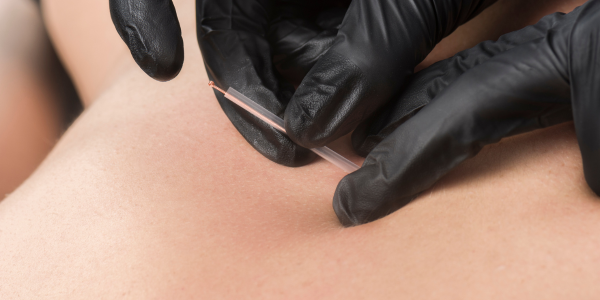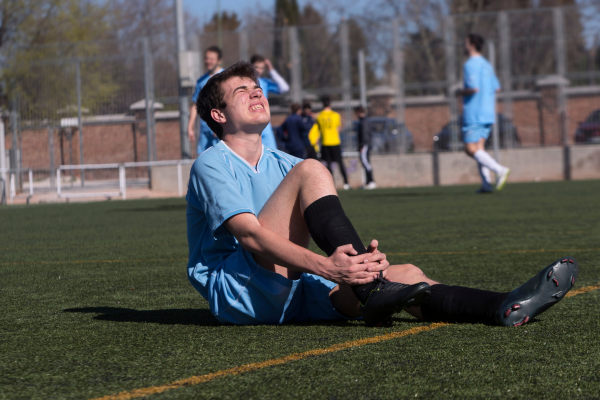Understanding Paediatric Physiotherapy: A Comprehensive Guide
In the dynamic and ever-evolving field of healthcare, paediatric physiotherapy stands out as a crucial specialty enthusiastic to enhancing the lives of children. At Keep In Motion, we are committed to providing the highest quality of care, ensuring that every child can move freely and live a healthy, active life. This comprehensive guide delves into what Child physiotherapy is, how it works, the benefits it offers, and its importance in child development.
What is Paediatric Physiotherapy
This is a specialised branch of physiotherapy that focuses on the physical development and rehabilitation of infants, children, and adolescents. It aims to improve the movement, function, and overall health of children who may be affected by various conditions such as developmental delays, congenital disorders, neurological impairments, and musculoskeletal issues.
At Keep In Motion, our paediatric physiotherapists are highly trained professionals who understand the unique needs of children. They employ a range of techniques tailored to the specific requirements of each child, ensuring personalised and effective treatment.
How Does Paediatric Physiotherapy Work
Paediatric physiotherapy involves a comprehensive assessment and the use of targeted interventions to support and enhance a child’s physical abilities. Here’s how it works:
1. Assessment and Diagnosis
The process begins with a detailed assessment to understand the child’s current physical abilities, medical history, and any specific challenges they may be facing. This involves:
- Observation: Monitoring the child’s movements, posture, and coordination.
- Physical Examination: Assessing muscle strength, joint flexibility, balance, and motor skills.
- Parent and Caregiver Interviews: Gathering information about the child’s developmental history and daily activities.
2. Individualised Treatment Plans
Based on the analysis, a personalized treatment plan is created. This plan is tailored to the child’s unique needs and may include:
- Exercise Therapy: Aimed at improving strength, flexibility, and endurance.
- Manual Therapy: Techniques such as joint mobilisation and soft tissue manipulation to enhance mobility.
- Developmental Activities: Activities designed to promote age-appropriate motor skills.
Sensory Integration Therapy: Helping children with sensory processing issues to respond more effectively to sensory stimuli.
3. Therapeutic Interventions
Paediatric physiotherapists employ a variety of therapeutic interventions to achieve the best outcomes. These may include:
- Play-Based Therapy: Using play as a medium to engage children and promote physical development.
- Hydrotherapy: Water-based exercises that help improve strength, coordination, and relaxation.
- Assistive Devices: Recommending and fitting devices such as braces, walkers, or wheelchairs to support mobility.
4. Parent and Caregiver Education
Education and support for parents and caregivers are integral to the success of paediatric physiotherapy. This includes:
- Home Exercise Programs: Providing exercises that can be done at home to complement in-clinic therapy.
- Training: Educating parents on how to support their child’s physical development and manage any challenges.
- Resource Sharing: Offering information about community resources and support groups.
Benefits of Child physiotherapy
Physiotherapy for children offers numerous benefits that can significantly improve a child’s quality of life. Here are some key advantages:
1. Enhance Physical Development
Pediatric physical therapy can help children reach milestones such as crawling, walking and running by promoting appropriate physical development. This is particularly beneficial for children with developmental delays or disabilities.
2. Improved Mobility and Independence
Therapeutic interventions can enhance a child’s mobility, making it easier for them to participate in daily activities and interact with their peers. Increased mobility fosters greater independence and self-confidence.
3. Pain Management
For children experiencing pain due to injuries or chronic conditions, paediatric physiotherapy offers effective pain management strategies. Techniques such as manual therapy and targeted exercises can alleviate discomfort and improve function.
4. Better Posture and Balance
Paediatric physiotherapy helps correct postural issues and improve balance, reducing the risk of falls and other injuries. This is crucial for children with conditions that affect their musculoskeletal system.
5. Support for Neurological Conditions
Children with neurological conditions such as cerebral palsy or spina bifida benefit from physiotherapy that addresses their specific needs, helping them achieve greater mobility and functional independence.
Why Is Paediatric Physiotherapy Important?
This type of physiotherapy is vital for several reasons:
1. Early Intervention and Prevention
Early intervention is key to addressing developmental and physical challenges before they become more significant issues. Paediatric physiotherapy can identify and treat problems early, preventing long-term complications.
2. Holistic Child Development
By focusing on the whole child, paediatric physiotherapy supports not only physical development but also emotional and social growth. This holistic approach ensures that children can lead fulfilling lives, participating fully in their communities.
3. Promotes Healthy Lifestyles
Physiotherapy encourages healthy habits and an active lifestyle from a young age. Children learn the importance of physical activity, which can lead to lifelong benefits in terms of health and well-being.
4. Family-Centred Care
Paediatric physiotherapy involves the whole family, providing support and education to parents and caregivers. This family-centred approach ensures that children receive consistent and comprehensive care both at home and in clinical settings.
Keep In Motion – Helping Your Child Reach Their Full Potential
At Keep In Motion, we are passionate about helping children of all ages thrive. Our paediatric physiotherapy team is dedicated to providing children with the support and guidance they need to reach their full potential in terms of movement, independence, and overall well-being.
Conclusion
At Keep In Motion, we understand the profound impact that paediatric physiotherapy can have on a child’s life. Our dedicated team of professionals is committed to providing the highest quality care, helping children overcome physical challenges and reach their full potential. Whether your child is facing developmental delays, recovering from an injury, or dealing with a chronic condition, paediatric physiotherapy offers a pathway to improved health, mobility, and independence.
For more information about our services and how we can support your child’s physical development, visit our website at Keep In Motion.
Frequently Asked Questions (FAQ)
What conditions can paediatric physiotherapy treat?
Paediatric physiotherapy can treat a wide range of conditions including developmental delays, cerebral palsy, spina bifida, muscular dystrophy, sports injuries, congenital disorders, and issues related to posture and balance. It also supports children recovering from surgeries or injuries.
At what age should my child start Child physiotherapy
Child physiotherapy can be beneficial for children of all ages, from newborns to adolescents. Early intervention is particularly crucial, so it’s advisable to start therapy as soon as any developmental or physical challenges are identified.
How often should my child attend paediatric physiotherapy sessions?
The frequency of paediatric physiotherapy sessions depends on the child’s specific needs and the severity of their condition. Typically, sessions may be scheduled once or twice a week, but your paediatric physiotherapist will provide a tailored plan.
What can I expect during a paediatric physiotherapy session?
During a paediatric physiotherapy session, you can expect a combination of assessments, exercises, and therapeutic activities. The session may include play-based therapy, developmental activities, and manual therapy. Parents may also receive guidance on home exercises and strategies to support their child’s development.
How can paediatric physiotherapy help my child with a neurological condition?
Paediatric physiotherapy can significantly improve the quality of life for children with neurological conditions such as cerebral palsy or spina bifida. It focuses on enhancing mobility, coordination, strength, and functional independence through targeted exercises and therapeutic interventions.
Are there any risks associated with paediatric physiotherapy?
Paediatric physiotherapy is generally safe and effective. Risks are minimal when sessions are conducted by a qualified physiotherapist. It is crucial to follow the prescribed therapy plan and consult with your physiotherapist if you have any concerns about your child’s treatment.
How can I support my child’s progress at home?
Parents can support their child’s progress by following the home exercise program provided by the physiotherapist, encouraging physical activity, and maintaining a supportive environment. Regular communication with your paediatric physiotherapist is also essential to monitor progress and make any necessary adjustments to the therapy plan.
Does paediatric physiotherapy hurt?
Paediatric physiotherapy is a gentle and child-centered approach. The techniques used are designed to be safe and comfortable for your child.
Is paediatric physiotherapy covered by private health insurance?
Many private health insurance providers offer rebates for paediatric physiotherapy. Keep In Motion can help you navigate claiming with your specific provider.
Also check out our blog on Medium











